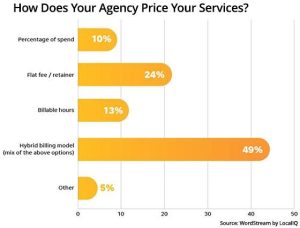The societal effects of the COVID-19 pandemic have been repeatedly characterized by a pair of terms that, at this point, we’re all likely a little tired of reading. Unprecedented is the first that comes to mind, followed by A New Normal as a close second. While it’s accurate that the cause-and-effect scenario stemming from COVID-19 has been entirely unprecedented, the pandemic hasn’t actually created a new normal. Our current reality is a world of erratic uncertainty. Nothing about 2020 fits the definition of normalcy.
Instead of a new normal, the pandemic actually represents a new era of opportunity. Right now, there’s never been a greater need for digitization. As the power of advanced technology is at an all-time high, industries have quickly learned that the companies transforming through digitization amid the pandemic are the ones that will emerge from the pandemic more capable than they were before it.
The power of advanced technology is what will shape our normal in the years to come, and it’s vital that the leaders of top technology organizations are cognizant of that. As the late Steve Jobs once said, “Innovation is what distinguishes a leader from a follower” — so it’s on us, as stewards of the sector, to be proactive in our leadership and continue offering digital innovation for industries that are combating the complexities of COVID-19.
Take Care of Your Team
Before technology organizations can achieve any level of success amidst the pandemic, they first must take care of their own. In that sense, it’s essential to support our employees in order to maintain a productive remote workforce. The sudden shift to full-time remote operations has been a major adjustment. Employees are experiencing cross-team collaboration challenges, communication gaps, increased levels of stress, and work-from-home burnout. Now more than ever, they need to feel supported.
Prior to the pandemic, informality was the glue that kept organizations intact. Informal interactions like a quick hello in the hallway, a chat at the water cooler, bringing someone their coffee or an impromptu lunch outside of the office helped to build trust across all levels of organizations. However, informal interactions are now few and far between. As leaders, it’s our responsibility to reinvent informality within remote environments.
Take advantage of numerous channels of communication, such as instant messaging, texting, and calling, instead of traditional emails and calendar invites. Find time to interact with employees outside of planned meetings or scheduled events. Make impromptu calls between team meetings, as if you walked into someone’s office to ask a question. Extend your availability by making time for colleagues outside of traditional business hours. Being accessible builds trust and strengthens relationships. Keep your teams informed by making an active effort to hold staff-wide meetings to share updates on company successes, new challenges, industry trends, and the overarching direction of your organization.
Focus on the Future
From a technology sector standpoint, the winners of the pandemic have been the ones who have made moves with a forward-thinking approach. Don’t hold a singular focus on what technologies are helping industries today. While it’s still important to keep tabs on current trends, you should also leverage insights from those trends to accurately forecast what advanced tech will make a difference after the pandemic.
Automated Intelligence and Machine Learning: Artificial intelligence (AI) will be utilized everywhere, ranging from streamlining supply chains and weathering demand volatility to optimizing inventory management and in-store layouts.
Prescriptive Analytics and Advanced Data: Companies will be relying on data-driven insights to analyze post-pandemic consumer trends, demand returns, and budgeting strategies.
E-Commerce: Consumers have become increasingly accustomed to the convenience of simplified online shopping, direct to consumer marketing (D2C) offerings, buy online and pick up in store (BOPIS), and curbside pick-up during the pandemic.
While in-store shopping will resume, e-commerce demand will continue to rise. Companies will be leveraging advanced technology to support, develop, and manage e-commerce fulfillment. Assess your organization’s business strategy to identify how your offerings and specializations align with the future of digitization. Knowing this information will allow you to develop areas of emphasis moving forward.
Retire Your Legacy Mindset
The formula for success after the pandemic will require technology companies to operate proactively instead of reactively. In turn, legacy mindsets must be left behind. Leaders with a legacy mindset lack openness to change and are instead confined to traditional (and often outdated) norms and business practices that don’t fit with the changing world around them.
Collaborate with your leadership team to streamline every aspect of your company’s internal operations and product offerings. You’ll then be able to identify and make necessary adjustments needed to meet the new needs of partners, customers and employees. For example, retailers are still stinging from the effects of widespread out of stocks at the height of the lockdown. There’s no telling where the next COVID-19 hotspot will be next so it’s impossible to prepare for such an event with traditional forecasting.
A better solution is to leverage a prescriptive analytics tool, the best of which includes a built-in capability called “demand sensing.” Demand sensing monitors demand trends in real time and adjusts your plan accordingly. For example, if it detects a slight, but guided, surge in sales of cleaning products in a specific area, it will determine whether or not the area’s planned-for supply is sufficient to meet projected demand in the coming weeks. If not, it will automatically adjust the plan, perhaps rerouting other areas’ shipments to the area at risk of an outbreak.
By aligning your offerings and internal operations with the ripple effects of the pandemic, you can boost prospect conversion rates and improve your ability to retain internal talent.
For technology organizations, these three leadership qualities will be essential for advancing in this era of opportunity and successfully navigating the changing industry landscape. During this period of uncertainty, leadership is what will separate the winners from the losers. With the right approach, organizational leaders can foster higher levels of sustained success leading into an unpredictable post-pandemic environment.
Schedule a free demo to learn more about how Zebra Technologies can help your business navigate the COVID-19 pandemic.
Business & Finance Articles on Business 2 Community
(13)
Report Post




